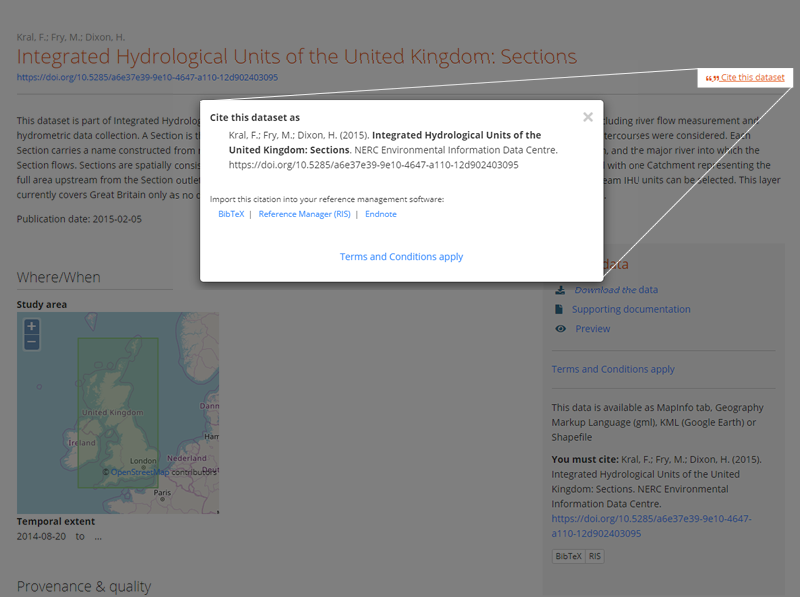Why cite data?
Data are a vital part of the scientific research process and so should be properly cited. You routinely cite journal articles, books or other publications that contribute to your research. Data is no different - if you use it you should cite it.
By citing data, you give its creators the acknowledgement they deserve and you also help other researchers to more easily identify and locate the data (see Credit for datasets for more information).
How to cite
There is no universal way to cite data - it varies across disciplines and journals. However, there are certain elements that are required:
-
Author(s) - the individual(s) or organisation(s) responsible for the creation of the dataset
-
Date (year) of publication
-
Title of the dataset
-
Publisher that makes the dataset available
-
Identifier (DOI)
For EIDC data, details of the citation and acknowledgement are shown in the heading of each dataset record. For example:
Kral, F.; Fry, M.; Dixon, H. (2015). Integrated Hydrological Units of the United Kingdom: Sections. NERC-Environmental Information Data Centre. (Dataset). http://doi.org/10.5285/a6e37e39-9e10-4647-a110-12d902403095

Different journals and publications may require different citation styles. If you need the citation in a specific style, the CrossRef DOI Citation Formatter service will help.
Reference management software
You can import EIDC citations into most popular reference management software (for example EndNote or Zotero). Simply click on the 'RIS' or 'BibTeX' icons to download the citation in that format and import the file into the management software.
